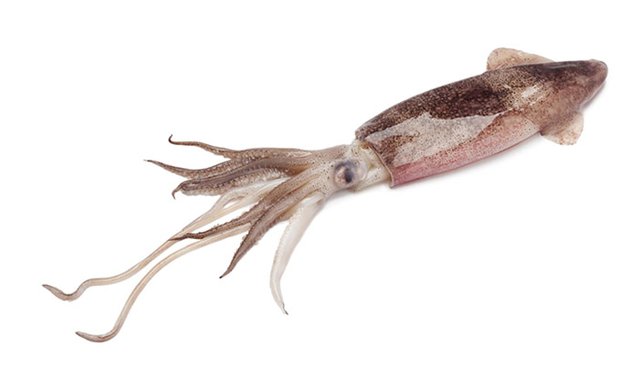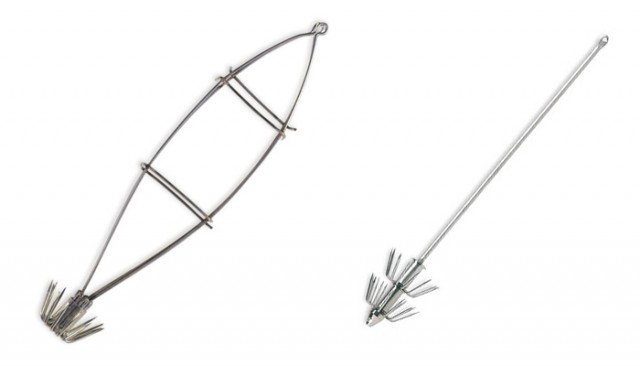
Autumn and its decidedly colder temperatures in the summer allow many of the sport fishing activities from the boat to resume. We must seize every possible opportunity, perhaps between one disturbance and another that periodically hit our Peninsula, trying to catch the seasonal preys that, in addition to the classic fish, are also represented by the tasty Calamari.
The fishing techniques used to catch these cephalopods are different and can be practiced either on land or by boat. This short article will deal with techniques that use a boat.
Equipment
Anyone intending to engage in this type of fishing needs more or less specific equipment. First of all, a small boat of modest size such as a goitre, a small fisherman or a similar 5-6 metre hull should be remedied, possibly with a well that is good enough to make it easier to lay lines.
The monofilament to be used must be 0.70 mm embedded on small cork frames. Each frame must contain at least 150-200 metres of line. For the terminal, it is necessary to have a 100 metre coil of 0.30/0.35 mm. Finally, to close the equipment, you must have a series of ordinary three-way swivels and some lead of variable weight to be used in case of strong currents.
It is advisable to have on board a lamp for lighting, or a diving torch.
Esche
The baits to be used to try to catch the squid are two artificial and natural.
The artificial baits to be preferred are the Yozuri, which simulate the prawn, or artificial coloured fusiform lures of various sizes. For primers with natural baits, the horse mackerel or boga in specific metal cages or rods can be seen in the photo.

The cage, fingers and artificial bars are equipped with a small string of pins that hold the squid securely fixed throughout the recovery daurata.
Where to fish
We don't know much about the life habits of the squid (Loligo vulgaris) and the little we know very often is not constant over the years.
It can be found in large sea depths or in the shallows of the sub-coast and is fished in more or less numerous flocks by bottom trawlers in the vicinity of the bottom at 60 metres. Autumn is the period favourable to the reproduction of the squid and approaches in copious flocks, temporarily stopping where it finds food in abundance, consisting of fish and crustaceans, and where it can hang its eggs.
Usually, these areas are made up of posidonias, shoals and more or less pronounced reliefs with a strong presence of crustaceans and molluscs. Virtually the ideal areas for squid are the prairies of posidonia in whose vicinity there are scattered rocks, at a depth ranging from 35 to about ten meters, immediately below the coast.
Frame
The frame can be made on the fishing site but it is advisable to prepare it first, at home or in the harbour where you are definitely more comfortable.
For details on the mounting you can read: Squid frame;
Fishing action
As with any fishing technique, it is necessary to identify a spot with characteristics similar to the above. Once you have found the right mail, you stop and let the boat drift drifting slowly.
It is necessary to lower the lines until the bait reaches the bottom, at this point it is necessary to give the artificial some life with some movements (up and down) of the line, attracting the attention of the squid. The intake of the squid can occur either slowly (when using tentacles) or suddenly with the use of the tuft.
When the catches tend to be thinned down, with the same frame it is possible to work the bait in various layers of water, recovering periodically the line up to the surface. If catches are not even picking up again, they are likely to be moving directly below the shoreline near the cliffs. It is best to move at very low speed with two lines in the water at the stern between 30 and 40 meters long.
In large depths
One of the most exciting techniques aimed at the squid is deep fishing, sometimes even more than 1000 meters, with the help of an electric salpabolentino. For a correct execution of the technique it is advisable that the moon is absent and the darkness must be as absolute as possible. A particular flashing light source must be lowered deep down and, after the moment of entry and with the use of the hiker, start recovery very slowly up to a depth of 50/80 meters.
The use of the light source is able to recall entire flocks that will follow, stopping with it in mid-water. However, if a single cephalopod does not remain good and can get rid of himself, the whole group will return to the bottom making all efforts useless.